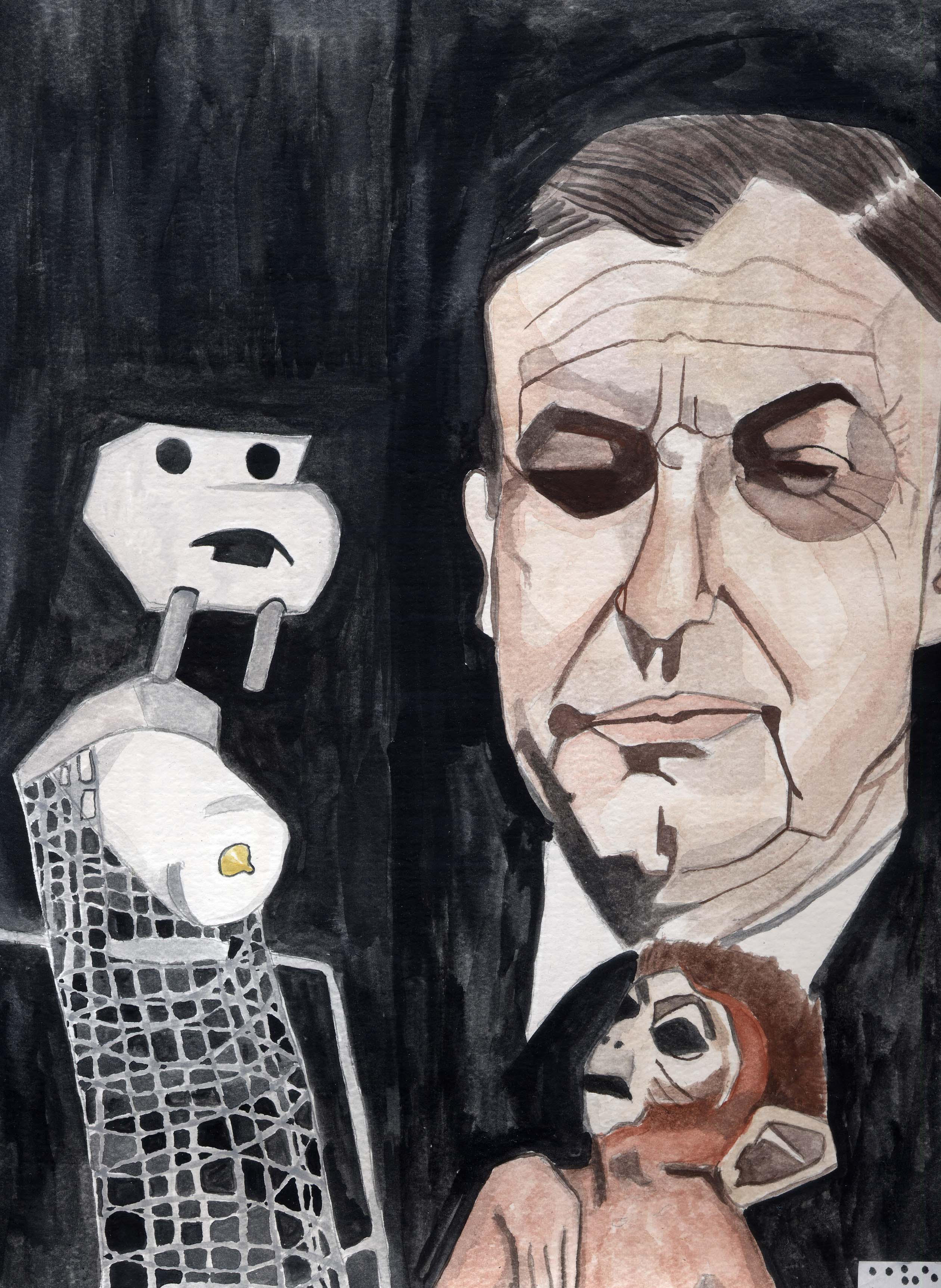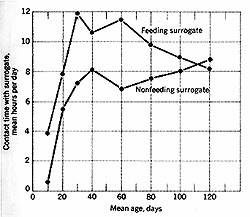
Monkey 106 and his two mothers:
| The textbook Principles of General
Psychology (1980 John Wiley and Sons) describes the experiments of Harry
Harlow and his associates at the Primate Laboratory of the University of
Wisconsin: |
|
| "In Harlow's initial experiments infant monkeys were
separated from their mothers at six to twelve hours after birth and were raised
instead with substitute or 'surrogate' mothers made either of heavy wire or of
wood covered with soft terry cloth. In one experiment both types of surrogates
were present in the cage, but only one was equipped with a nipple from which the
infant could nurse. Some infants received nourishment from the wire mother, and
others were fed from the cloth mother. Even when the wire mother was the source
of nourishment, the infant monkey spent a greater amount of time clinging to the
cloth surrogate." ... "...the actions of surrogate-raised monkeys became bizarre later in life. They engaged in stereotyped behavior patterns such as clutching themselves and rocking constantly back and forth; they exhibited excessive and misdirected aggression..." | |
| ... "Sex behavior was, for all practical purposes, destroyed; sexual posturing was commonly stereotyped and infantile. Frequently when an isolate [surrogate-raised] female was approached by a normal male, she would sit unmoved, squatting upon the floor -- a posture in which only her heart was in the right place. Contrariwise, an isolate male might approach an in-estrus female, but he might clasp the head instead of the hind legs, and then engage in pelvic thrusts. Other isolate males grasped the female's body laterally, whereby all sexual efforts left them working at cross purposes with reality." ... "The behavior of these monkeys as mothers -- the 'motherless mothers' as Harlow called them -- proved to be very inadequate ... These mothers tended to be either indifferent or abusive toward their babies. The indifferent mothers did not nurse, comfort, or protect their young, but they did not harm them. The abusive mothers violently bit or otherwise injured their infants, to the point that many of them died."  |
No comments:
Post a Comment
Note: Only a member of this blog may post a comment.